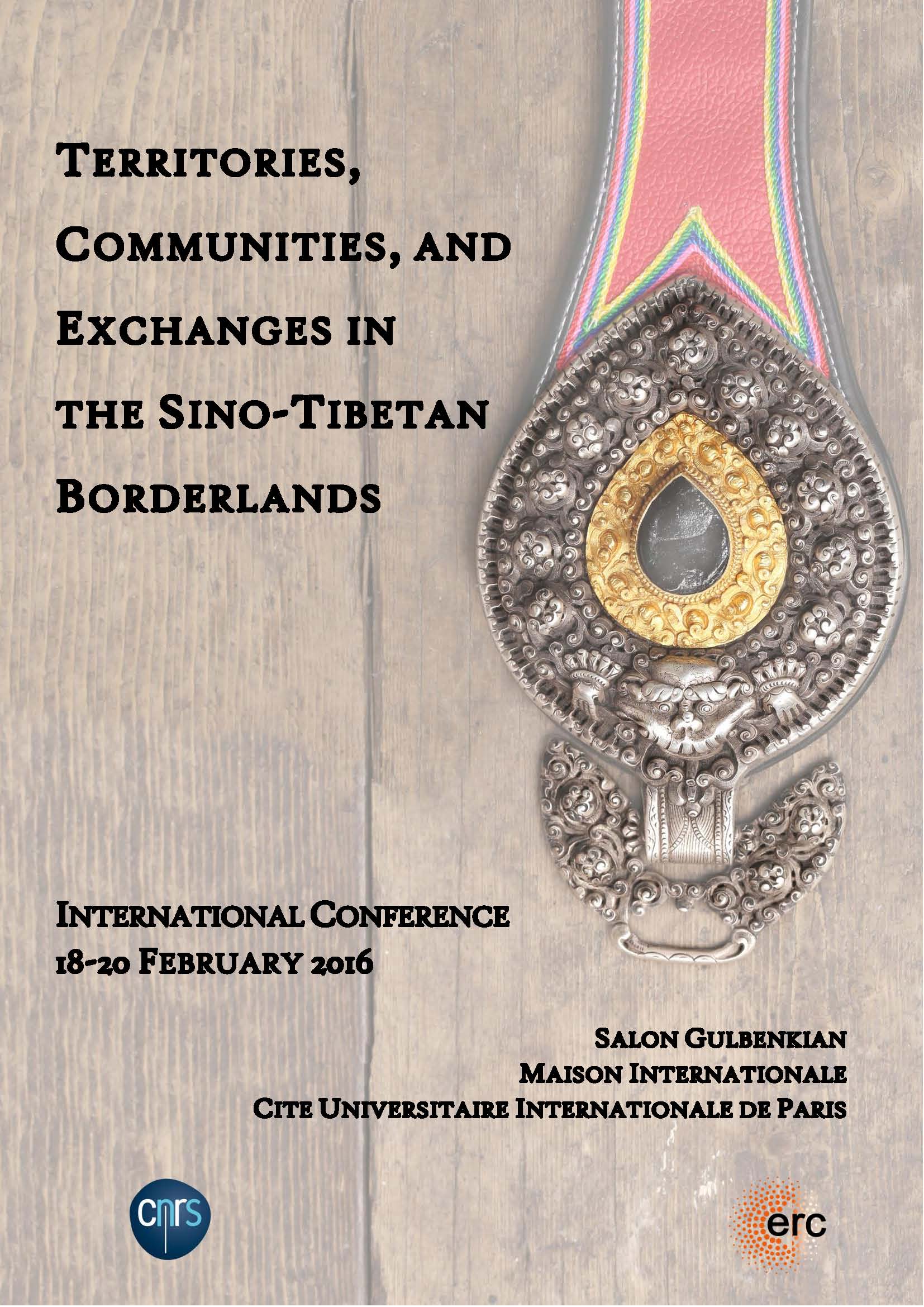Kham Project

Vidéos
Fabienne Jagou, " Manchu Officials’ Khams Travel Accounts: Mapping a Course Through a Qing Territor…
Throughout the Qing dynasty (1644-1911), more and more travelers –officials, military and merchants- went to the Southwest border of China and dedicated some of their time to writing travel accounts,
Scott Relyea (Hamline University), " Settling Authority: Sichuanese Farmers in Early Twentieth Cent…
From 1907 to 1911, some 4,000 commoners from the Sichuan Basin ventured west. Enticed by promises of large tracts of uncultivated land and three years of free rent, seeds, animals, and farm implements
Mark Frank, " Chinese Physiocracy: Kham as Laboratory for the Agrarian Theory of China "
When a nation-state looks to intensive agriculture for its national essence, what are the implications at the local level? This paper looks at agricultural colonization efforts (tunken屯垦) of the
Isabelle Henrion Dourcy (University of Laval), "Making Movies in the Gesar Heartland: The Burgeonin…
This conference is an outcome of the collaborative ERC-funded research project “Territories, Communities, and Exchanges in the Sino-Tibetan Kham Borderlands” This research project focuses on the
Dawa Drolma (Bay Path University), " The Renaissance of Traditional Dzongsar Craft-making in the Me…
As a member of a deeply-rooted traditional craft-making family in the Meshö (Sman Shod) Valley of Kham region, I will present the results of my ongoing fieldwork and academic study on the renaissance
Chen Bo (Sichuan University), “House Society” Revisited "
In this paper, I will begin by considering the concept of “house society” and its applicability to Southwest China. I ask the question of why no scholar, Levi-Strauss included since he originally
Tenzin Jinba (National University of Singapore), " Two Gyalrong Weddings Under Fire: Rethinking of …
Two weddings in 2009 and 2015 respectively have received wide publicity among Tibetans and others within and out of China. The first was that of Lobsang Dundrup, a renowned singer from Gyalrong, and
Yudru Tsomu (Sichuan University), " Rise of a Political Strongman in Dergé in the Early Twentieth C…
This paper discuses rivalry for the throne of Dergé between 1890 and 1940. In the late nineteenth and early twentieth centuries, internecine feuds created a power vacuum serious enough to invite
John Bray, "French Catholic Missions and Sino-Tibetan Trade: Local Networks and International Enter…
The Missions Étrangères de Paris (MEP) sent their first missionary on an exploratory mission to the Sino-Tibetan borderlands in 1847, and they retained a presence in the region until 1952. Together
C. Pat Giersch (Wellesley College), "Patterns of Inclusion and Exclusion Along Twentieth-Century Ch…
In recent years, increasingly sophisticated work has traced the remarkable changes in early twentieth-century state-building along China's southwestern and Tibetan borderlands. During this same period
Lucia Galli (University of Oxford), "The Price of Enlightenment: The Travel Account of Kha stag ʼDz…
Frontier territories characterised by intense socio-economic, political, and cultural inter-actions, in the mid-nineteenth century the easternmost fringes of the Tibetan plateau saw the rise of the
Stéphane Gros (Centre National de la Recherche Scientifique), "Matrifocality and the House in Drapa…
The practice of a non-contractual, nonobligatory, and nonexclusive visiting sexual system among a matrilineal group in Southwest China has generated as much interest in anthropology as in the mass
Elizabeth Reynolds (Columbia University), " Monasteries, Merchants, and Long Distance Trade: The Ec…
Pre-1959 Tibet was not a “closed off land” as is often assumed, but a place of dynamic economic structures and a diverse body of economic actors. The Trehor region, an area located in modern day
Dáša Mortensen (University of North Carolina at Chapel Hill), " Wangchuk Tempa and the Control of G…
This paper examines the fascinating life of Wangchuk Tempa 汪学鼎 (1886-1961), the de facto early-twentieth-century political and military leader of Gyalthang (rGyal Thang) in southern Kham, in order to
Eric Mortensen (Guilford College)," Boundaries of the Borderlands : Mapping Gyalthang"
This project seeks to discern the physical and conceptual boundaries of the Tibetan region of Gyalthang, in southern Kham. At issue are questions about the relationships between older
Katia Buffetrille (Ecole Pratique des Hautes Etudes), " The Increasing Visibility of the Borderland…
For centuries, Central Tibet and its capital Lhasa were regarded as the center—as is obviously expressed in the very name of the region in Tibetan, dBus, “Center”—of political and religious life in
Intervenants et intervenantes
Ethnologue spécialiste des Drung, chargé de recherche au CNRS
Membre de l'équipe "Centre d'études sud-asiatiques et himalayennes" (CESAH) (en 2023)
Membre de l'équipe "Centre d'études himalayennes" (UPR 299) (en 2017)
















